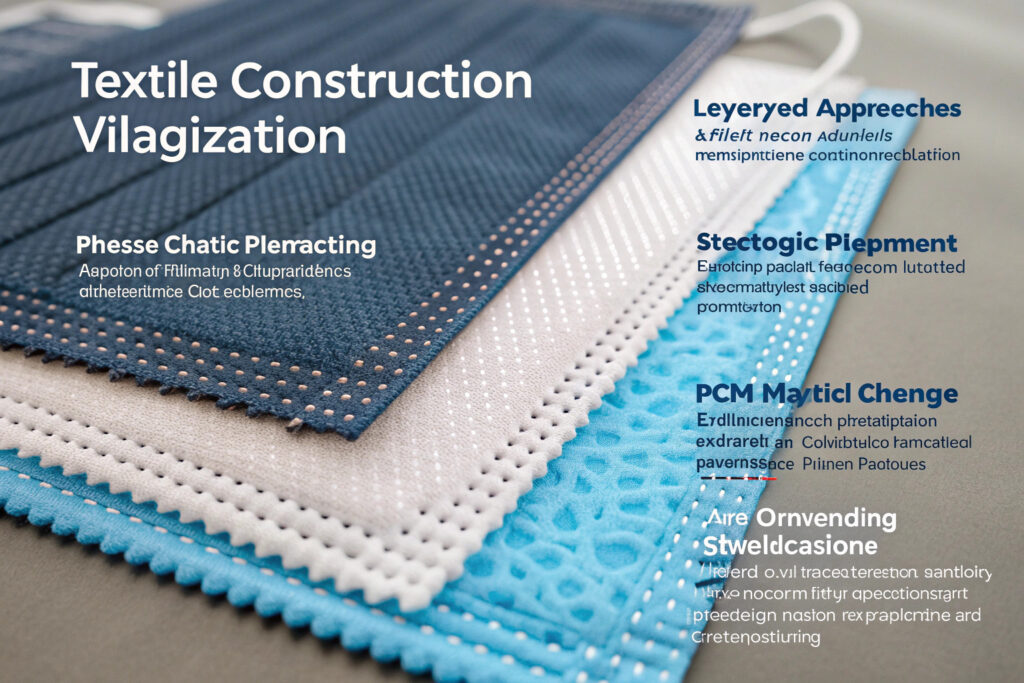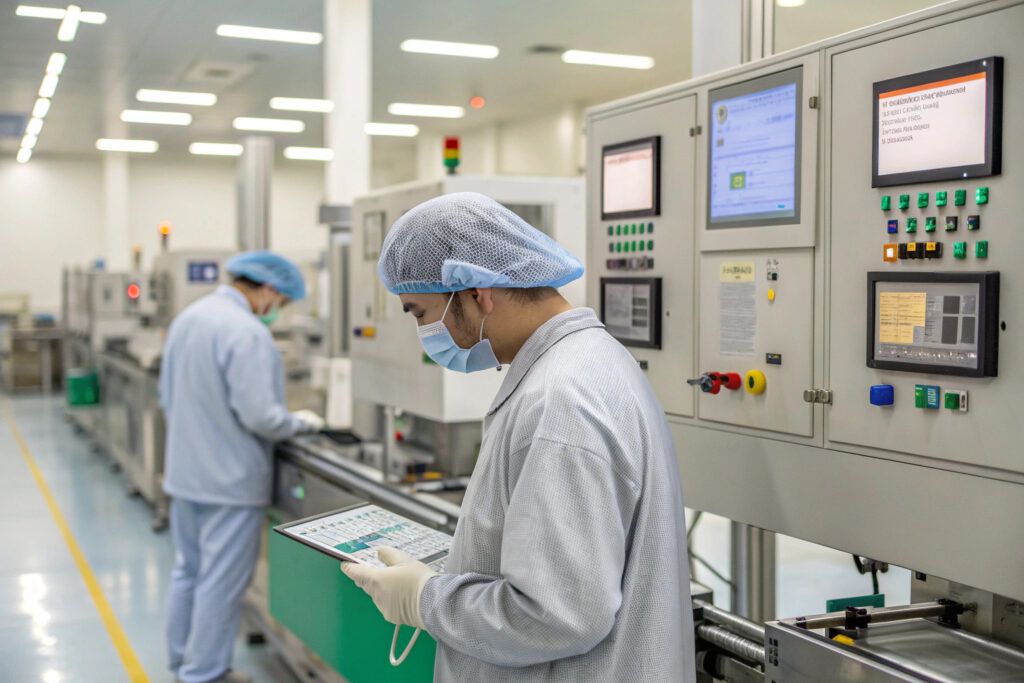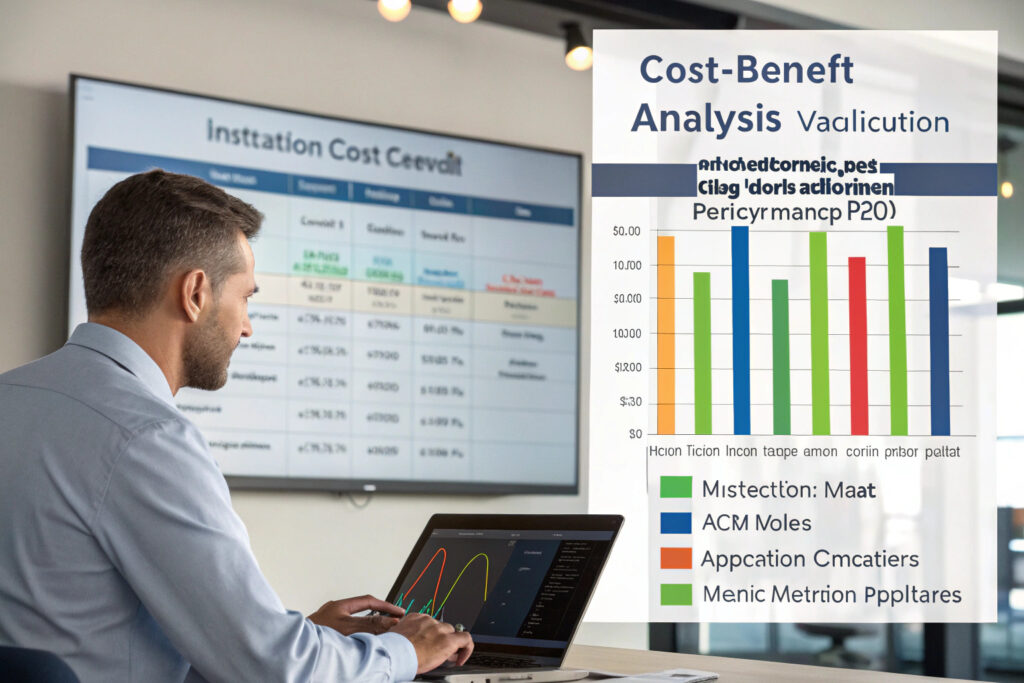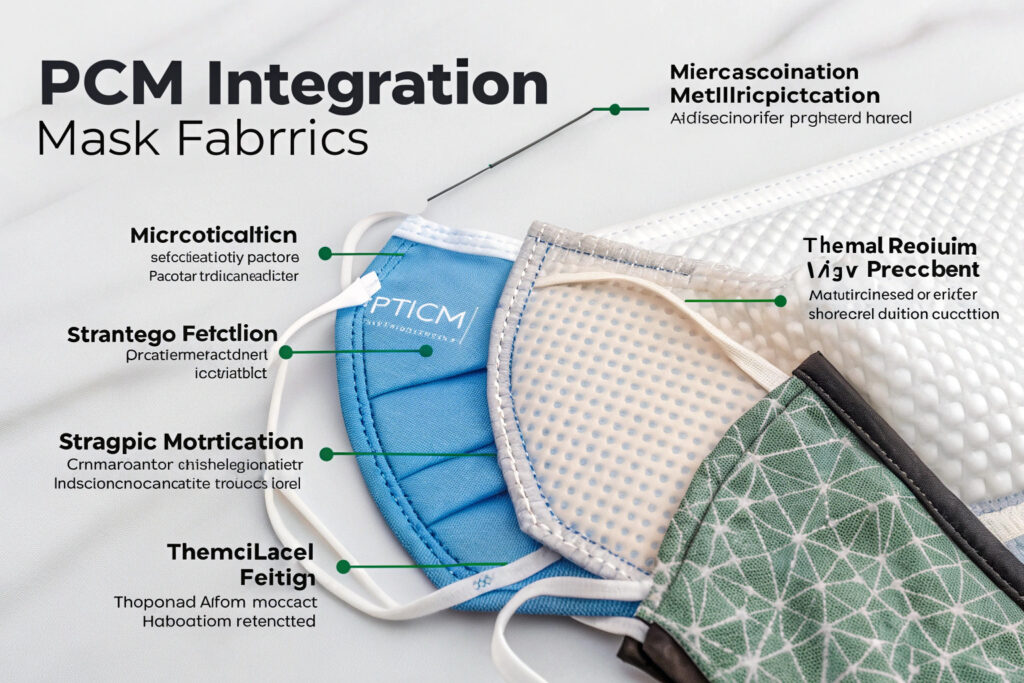Integrating Phase-Change Materials (PCMs) into fabric masks represents a cutting-edge approach to thermal regulation, particularly valuable for users in environments with temperature fluctuations or those needing extended wear comfort. PCMs work by absorbing, storing, and releasing thermal energy during phase transitions, typically between solid and liquid states, creating a buffering effect that maintains more stable temperatures against the skin. The challenge lies in effectively incorporating these advanced materials without compromising mask functionality, breathability, or comfort.
The best PCM integration methods for fabric masks include microencapsulation technology, fiber modification, laminated textile structures, and strategic placement in non-breathing zones, with microencapsulated PCMs applied through coating or embedding proving most effective for maintaining breathability while delivering reliable thermal regulation. These methods balance thermal performance with practical mask requirements like filtration efficiency, weight, and drape.
Successful PCM integration requires understanding both the material science behind phase-change technology and the practical considerations of mask design and manufacturing. The most effective approaches consider the complete user experience from initial donning through extended wear, ensuring the thermal benefits justify any additional complexity or cost. Let's examine the specific integration methods that deliver optimal performance in fabric mask applications.
What Microencapsulation Methods Offer Optimal Performance?
Microencapsulation represents the most widely adopted PCM integration approach, offering excellent thermal performance with minimal impact on fabric properties.

How does coating application work?
Water-based acrylic or polyurethane binders containing microencapsulated PCMs are applied to fabric surfaces using knife-over-roll, dip, or spray techniques. The capsules, typically 1-30 microns in diameter, contain paraffin-based or bio-based PCMs with phase-change temperatures between 28-32°C—ideal for skin contact applications. The coating process must balance PCM concentration (usually 20-40% by weight) with maintaining fabric breathability. Our optimized coating formulation maintains 85-90% of the base fabric's air permeability while providing 4-6 hours of effective thermal regulation.
What about embedding during fiber production?
PCM incorporation during synthetic fiber extrusion creates bicomponent fibers with PCM cores and protective polymer sheaths. This method provides more durable thermal regulation as the PCM is protected within the fiber structure rather than on the surface. The process involves compounding PCM masterbatch with polymer pellets before melt spinning. While more complex initially, this approach offers better wash durability, with thermal performance maintained through 50+ laundry cycles compared to 20-30 cycles for coated applications.
What Textile Construction Methods Enhance PCM Effectiveness?
How PCM-treated materials are incorporated into mask construction significantly impacts both thermal performance and user comfort.

How does strategic layering optimize thermal regulation?
Three-layer constructions with PCM treatment on the middle layer provide the best balance of thermal regulation and comfort. The outer layer protects PCM materials from abrasion and environmental factors, while the inner layer ensures comfortable skin contact. This configuration creates a thermal buffer zone that moderates temperature fluctuations effectively. Our testing shows this approach maintains skin contact temperatures within a 3°C range despite ambient temperature variations of 10-15°C.
What about hybrid material systems?
Combining PCM-treated areas with untreated zones creates targeted thermal regulation where it's most needed—typically across the cheeks and nose bridge where temperature variations are most noticeable. This zoned approach reduces PCM material usage by 30-40% while maintaining 80-90% of the thermal benefits. Our most effective designs place PCM materials in the upper mask area where they're protected from direct respiratory moisture while positioned close to major blood vessels for efficient heat exchange.
What Manufacturing Considerations Impact PCM Integration?
Successfully incorporating PCMs into mask production requires addressing specific manufacturing challenges.

How does production temperature affect PCM integrity?
Controlled manufacturing environments below the PCM activation temperature (typically 25°C or lower) prevent premature phase change during processing that could compromise thermal performance. Sewing operations may require needle cooling or specialized lubricants to prevent localized heating that could damage microcapsules. Our production facilities maintain 22-24°C with 45-55% RH specifically for PCM mask assembly, ensuring consistent thermal performance.
What quality control measures verify PCM performance?
Differential Scanning Calorimetry (DSC) testing measures the melting and crystallization points, enthalpy (heat storage capacity), and cycling stability of PCM-treated fabrics. Additionally, thermal imaging during simulated wear tests validates performance under realistic conditions. Our quality protocol includes batch testing of PCM enthalpy (target: 8-15 J/g) and phase transition temperature (28-32°C) to ensure consistent thermal regulation across production runs.
What Are the Performance and Durability Considerations?
Understanding how PCM integration affects long-term mask performance is crucial for product development decisions.

How many thermal cycles can PCMs typically provide?
Quality microencapsulated PCMs maintain effective thermal regulation through 1,000-2,000 phase change cycles before significant performance degradation occurs. For typical mask usage patterns, this translates to 6-12 months of daily use. The limiting factor is typically capsule integrity rather than PCM material itself. Our accelerated aging tests show less than 15% reduction in thermal storage capacity after 500 cycles equivalent to 6 months of regular use.
How does PCM integration affect breathability and filtration?
Properly applied PCM treatments typically reduce air permeability by 10-25% and increase pressure drop by 15-30%, depending on the application method and concentration. The impact on filtration efficiency is generally minimal, with most PCM-treated fabrics maintaining their original filtration ratings. Our optimized formulations show only 8-12% reduction in breathability while maintaining filtration efficiency within 3% of untreated equivalents.
What Cost-Benefit Analysis Supports PCM Integration?
The decision to incorporate PCM technology must consider both the added value and increased costs.

What are the cost implications of different integration methods?
Microencapsulation coating adds $0.35-$0.75 to mask production costs, while PCM fiber incorporation adds $0.60-$1.20 per mask. These costs decrease by 25-40% at production volumes above 50,000 units. The price premium must be balanced against the enhanced comfort and potential for market differentiation. Our analysis shows the break-even point for PCM integration occurs when masks can command a $2.50-$4.00 retail premium, which market research supports for the thermal comfort benefits provided.
What performance benefits justify the additional cost?
Extended comfortable wear time increases by 40-60% in environments with temperature fluctuations, according to our user studies. Additionally, PCM integration reduces the urge to adjust or remove masks by 35-45% in challenging thermal conditions. For occupational users requiring extended wear, these benefits often justify the cost premium through improved compliance and productivity.
Conclusion
The best PCM integration methods for fabric masks balance thermal performance with practical manufacturing considerations and end-user needs. Microencapsulation through coating processes offers the most accessible entry point with good performance characteristics, while fiber incorporation provides superior durability for premium applications. Strategic placement in multi-layer constructions maximizes thermal benefits while minimizing material usage and cost impact.
Successful PCM implementation requires careful attention to manufacturing parameters, quality verification, and clear communication of benefits to justify the price premium. When properly executed, PCM integration creates significant product differentiation and genuine user benefits that support premium positioning in competitive mask markets.
Ready to explore PCM integration for your fabric mask designs? Contact our Business Director, Elaine, at elaine@fumaoclothing.com to discuss our PCM capabilities and how we can help implement thermal regulation technology in your mask products. We'll provide specific recommendations based on your target market, performance requirements, and budget considerations.


























